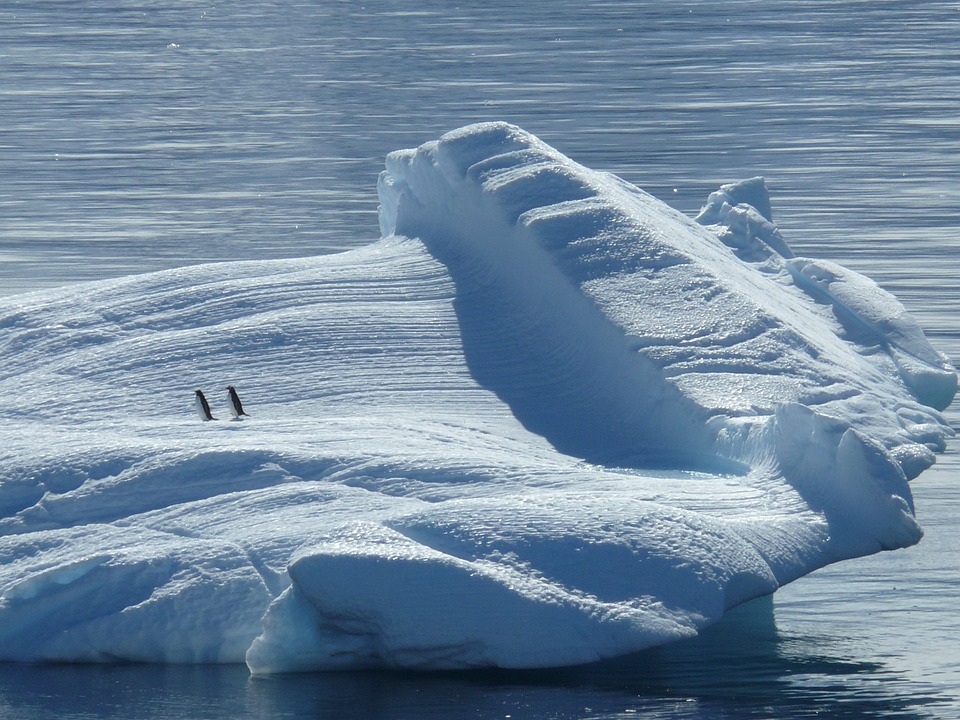
West Antarctica lost over 3,000 bn tonnes of ice in 25 years: Study

Over a 25-year span, scientists have determined that the Amundsen Sea Embayment, the most rapidly changing region in Antarctica located in West Antarctica, has lost more than 3,000 billion tonnes of ice.
The study by University of Leeds, UK, shows that West Antarctica saw a net decline of 3,331 billion tonnes of ice between 1996 and 2021, contributing over nine millimetres to global sea levels.
The study said that if all of this lost ice was piled on London, it would stand over 2 km tall. If it were to cover Manhattan, it would stand at as tall as 137 Empire State Buildings placed on top of one another.
Also Read: Chandrayaan-3 and Aditya L1 missions may take off by mid-2023: ISRO chief
“Changes in ocean temperature and circulation appear to be driving the long-term, large-scale changes in West Antarctica ice sheet mass. We absolutely need to research those more because they are likely to control the overall sea level contribution from West Antarctica,” said Benjamin Davison, lead researcher of the study, University of Leeds.
The twenty major glaciers, which form the Amundsen Sea Embayment in West Antarctica, play a key role in contributing to the world’s oceans levels. They together are more than four times the size of the UK.
If all the water held in the snow and ice were to drain into the sea, the study said, global sea levels could increase by more than one metre.
The findings are published in the journal Nature Communications.
Also Read: IPCC report urges action, especially from countries like India: Co-authors
Davison calculated the “mass balance” of the Amundsen Sea Embayment, which describes the balance between mass of snow and ice gain from snowfall and mass lost through calving, where icebergs form at the end of a glacier and drift out to sea.
The Embayment loses mass overall when the rate of calving is higher than that of ice being replaced by snowfall, thereby, contributing to global sea level rise.
Similarly, when snowfall supply drops, the Embayment can lose mass overall, again, contributing to sea level rise.
“The 20 glaciers in West Antarctica have lost an awful lot of ice over the last quarter of a century and there is no sign that the process is going to reverse anytime soon although there were periods where the rate of mass loss did ease slightly,” said Davison.
The scientists further found that several extreme snowfall events, that the Amundsen Sea Embayment had experienced over the 25-year study period, played a key role in the Embayment’s contribution to sea level rise during certain time periods.
Also Read: Study provides new insights into drug-resistant tuberculosis
This is because these events contributed up to half of the ice change at certain times.
The researchers factored these extreme events of heavy snowfall and “snow drought” into their calculations.
For example, between 2009 and 2013, the models revealed a period of persistently low snowfall, or “snow drought”. The lack of nourishing snowfall starved the ice sheet and caused it to lose ice, therefore contributing about 25 per cent more to sea level rise than in years of average snowfall.
In contrast, during the winters of 2019 and 2020 there was very heavy snowfall. The scientists estimated that this heavy snowfall mitigated the sea level contribution from the Amundsen Sea Embayment, reducing it to about half of what it would have been in an average year.
Also Read: Indian scientist develops inexpensive pH sensor that can tell if your food is spoiled
“We were really surprised to see just how much periods of extremely low or high snowfall could affect the ice sheet over two to five-year periods – so much so that we think they could play an important, albeit secondary role, in controlling rates of West Antarctic ice loss,” said Davison.
“Scientists are monitoring what is happening in the Amundsen Sea Embayment because of the crucial role it plays in sea-level rise. If ocean levels were to rise significantly in future years, there are communities around the world who would experience extreme flooding,” said Davison.
(With agency inputs)


